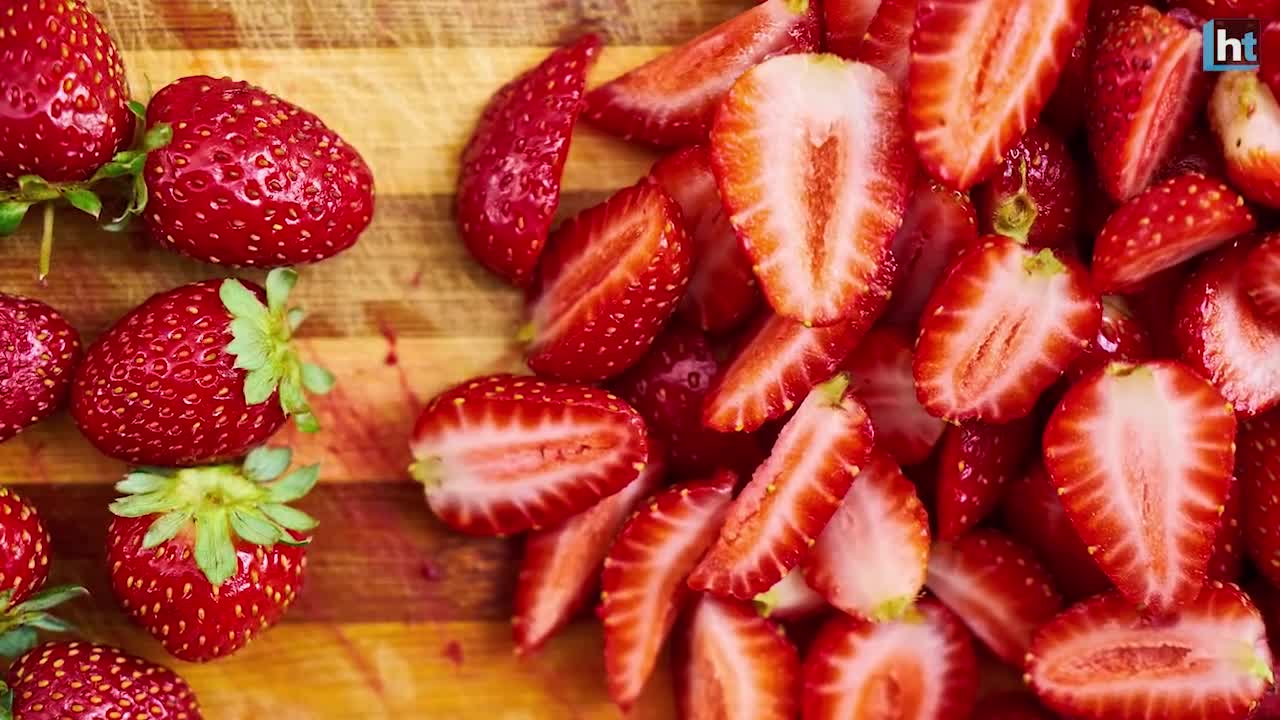Premium Only Content

Top fruits that can help you lose weight
IMPORTANT: Here is the new video that scientists have proven that it has helped billions of people to lose weight within a short of some months, CLICK HERE <<https://cutt.ly/DZ2o5iL>> and watch it now
1. Grapefruit
Grapefruit is a cross between a pomelo and an orange and is commonly associated with dieting and weight loss.
Half a grapefruit contains just 39 calories but provides 65% of the reference daily intake (RDI) for vitamin C. Red varieties also offer 28% of the RDI for vitamin A (1Trusted Source).
What’s more, grapefruit has a low glycemic index (GI), which means it releases sugar into your bloodstream more slowly. A low-GI diet may aid weight loss and weight maintenance, though the evidence is limited (2, 3Trusted Source, 4Trusted Source, 5Trusted Source).
In a study in 85 obese people, eating grapefruit or drinking grapefruit juice before meals for 12 weeks resulted in a decrease in calorie intake, a 7.1% decrease in body weight, and improved cholesterol levels (6Trusted Source).
Additionally, a recent review found that grapefruit consumption reduced body fat, waist circumference, and blood pressure compared to control groups (7Trusted Source).
While grapefruit can be eaten on its own, it also makes a great addition to salads and other dishes.
2. Apples
Apples are low in calories and high in fiber, with 116 calories and 5.4 grams of fiber per large fruit (223 grams) (1Trusted Source).
They have also been found to support weight loss.
In one study, women were given three apples, three pears, or three oat cookies — with the same calorie value — per day for 10 weeks. The apple group lost 2 pounds (0.91 kg) and the pear group 1.6 pounds (0.84 kg), while the oat group’s weight did not change (8Trusted Source).
Additionally, an observational study in 124,086 individuals determined that people who ate apples lost an average of 1.24 pounds (0.56 kg) per daily serving over a four-year period (9Trusted Source).
Because low-calorie fruits like apples are more filling, you may eat less of other foods during the course of the day. Notably, an apple is almost three times as filling as a chocolate bar (10Trusted Source).
Research shows that apples are best eaten whole — rather than juiced — to reduce hunger and control appetite (11Trusted Source).
That said, two studies link apple juice to reductions in body fat compared to a control drink with the same number of calories. Apple polyphenol extract — made from one of the fruit’s natural compounds — has also been linked to reduced cholesterol levels (12Trusted Source, 13Trusted Source, 14Trusted Source).
Apples can be enjoyed in a variety of ways both cooked and raw. Try adding them to hot and cold cereals, yogurt, stews, and salads, or baking them on their own.
3. Berries
Berries are low-calorie nutrient powerhouses.
For example, a 1/2 cup (74 grams) of blueberries contains just 42 calories but provides 12% of the RDI for vitamin C and manganese, as well as 18% for vitamin K (1Trusted Source).
One cup (152 grams) of strawberries contains under 50 calories and provides 3 grams of dietary fiber, as well as 150% of the RDI for vitamin C and almost 30% for manganese (1Trusted Source).
Berries have also been shown to be filling. One small study found that people given a 65-calorie berry snack ate less food at a subsequent meal than those given candies with the same number of calories (15Trusted Source).
Additionally, eating berries may help decrease cholesterol levels, reduce blood pressure, and lower inflammation, which may be particularly helpful to people who are overweight (16Trusted Source, 17Trusted Source).
Both fresh or frozen berries can be added to cereal or yogurt for breakfast, blended in a healthy smoothie, mixed into baked goods, or tossed in a salad.
5. Passion Fruit
Passion fruit, which originates in South America, grows on a beautiful, flowering vine. It has a tough outer rind — purple or yellow in color — with an edible, pulpy seed mass inside.
One fruit (18 grams) contains just 17 calories and is a rich source of fiber, vitamin C, vitamin A, iron, and potassium (1Trusted Source).
For such a small fruit, passion fruit holds ample dietary fiber. In fact, five of them give 42% of the RDI for fewer than 100 calories (1Trusted Source).
Fiber slows down your digestion, helping you feel fuller for longer and controlling your appetite (18Trusted Source).
Additionally, passion fruit seeds provide piceatannol, a substance linked to reductions in blood pressure and improved insulin sensitivity in overweight men. However, more research is needed (19Trusted Source).
For weight loss, passion fruit is best consumed whole. It can be eaten alone, used as a topping or filling for desserts, or added to drinks.
-
 4:07
4:07
WKBW
2 years agoCustomized programs to help you lose weight
2 -
 LIVE
LIVE
ttvglamourx
10 hours ago $0.45 earnedBIRTHDAY STREAM !DISCORD
203 watching -
![[Macho Madness] Featuring G2G, Lanc & Mochi [ Fortnite --> Ghost Recon Wild Lands ]](https://1a-1791.com/video/fww1/fe/s8/1/h/g/6/D/hg6Dy.0kob-small-Macho-Madness-Featuring-G2G.jpg) LIVE
LIVE
CHiLi XDD
5 hours ago[Macho Madness] Featuring G2G, Lanc & Mochi [ Fortnite --> Ghost Recon Wild Lands ]
89 watching -
 LIVE
LIVE
We Like Shooting
15 hours agoWe Like Shooting 607 (Gun Podcast)
297 watching -
 2:01:40
2:01:40
Joker Effect
2 hours agoYOU WOULD NEVER CLICK THIS BECAUSE YOU ARE SCARED YOU WILL LOVE IT.
10.6K2 -
 UPCOMING
UPCOMING
Anthony Rogers
1 day agoEpisode 363 - Can A.I. Be Used to Talk to the Dead?
6.63K1 -
 LIVE
LIVE
Meisters of Madness
6 hours agoThe Umbral Playthrough - Part 2
123 watching -
 58:57
58:57
Donald Trump Jr.
7 hours agoAmerica First, Always. Interviews with Ned Ryun & Kenny Cody | TRIGGERED Ep.235
131K74 -
 1:36:33
1:36:33
megimu32
4 hours agoON THE SUBJECT: Mixtapes, Mosh Pits & Mistakes: How 90s Rock Raised Us
19.6K2 -
 52:11
52:11
BonginoReport
7 hours agoDHS Sec Noem ROBBED By Masked Man on Easter - Nightly Scroll w/ Hayley Caronia (Ep.31)
94K118